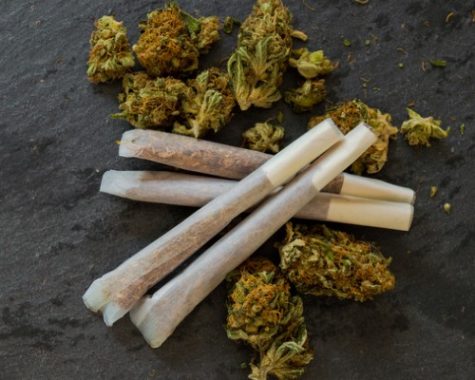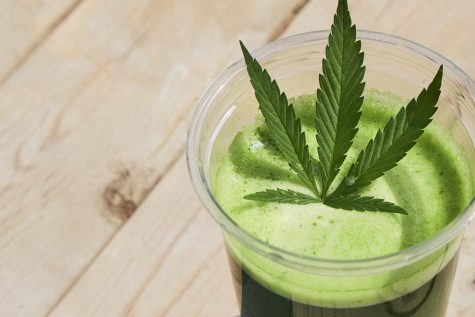Legal industrial hemp could help restore bee populations
The newly launched industrial hemp market is rapidly gaining momentum across the United States. Following the passing of the 2018 Department of Agriculture Farm Bill, the green crop was finally legalized. Not only has this led to a surge in the number of farmers cultivating hemp for the creation of CBD – a global market poised to be worth $553.7 million this year – but a new study focused on bees and hemp tells us that it could also be benefiting bee populations.
Titled, “The Bee Community of Cannabis sativa and Corresponding Effects of Landscape Composition,” the study was published in the journal Environmental Entomology. Based on the findings, bee populations and species diversity is improving. These results were confirmed after a team analyzed various bee species that linger around hemp flowers in 11 different farms; sprinkled around New York’s Finger Lakes region.
“We identified all bee visitors to the species level and found that hemp supported 16 different bee species,” wrote the authors.
Study on bees and hemp: Two different bee species are enjoying hemp flowers the most
According to the authors of this recent study on bees and hemp, winged creatures enjoy an abundance of pollen amid the flowering of hemp plants; occurring in late summer. The time of year in which hemp plants tend to flower plays an important role in bee populations, since other plants typically don’t flower during summer.
A lack of flowering plants in summertime means that bees don’t have access to enough pollen; resulting in dwindling bee populations and species diversity. Two particular species of bees favor hemp plants the most,
say the authors: bombus impatiens (the bumblebee) and apis mellifera (the honey bee). These two hemp-loving bee species constituted an impressive 90 percent of the netted bees that were monitored during this study.
“Because of its temporally-unique flowering phenology, hemp has the potential to provide a critical nutritional resource to a diverse community of bees during a period of floral scarcity and thereby may help to sustain agroecosystem-wide pollination services for other crops in the landscape,” reads an excerpt from the study. “As cultivation of hemp increases, growers, land managers, and policy makers should consider its value in supporting bee communities and take its attractiveness to bees into account when developing pest management strategies,” continued the study authors.
Another interesting finding from this study on bees and hemp was that the flying insects preferred taller hemp trees, as opposed to plants that were shorter in height.
Bee population crisis has been escalating over the last few years
What the team of researchers discovered from this study on bees and hemp couldn’t have come at a better time. Thanks to the fairly recent passing of the 2018 Farm Bill, the flying insects can continuously enjoy increased access to hemp plants. Plus, with an ever-growing crisis regarding bee populations becoming apparent over the last few years, hemp could quite literally be a life-saving plant.
Previously, researchers investigated bee populations; what they found was worrying. Between the years 1947 and 2005, honeybee populations sunk by more than 40 percent; dropping from 5.9 million to 2.4 million. During the winter months, bee populations plummeted the most; a third of bees died during the coldest time of the year.
More recent figures show that honeybee keepers lost 44 percent of their colonies in the previous 12 months; an increase from 39 percent in 2014 and 42.1 percent in 2015.
On a more positive note, thanks to the findings of this recent study on bees and hemp, the non-psychotropic strain of cannabis could have another use; aside from the many that we already know about, i.e. to produce CBD and for the creation of food, biofuel, rope, textiles, clothing, shoes, bioplastics paper. The fact that hemp is pollinated in the wind, combined with the rise in hemp cultivation across the U.S., means that bees are benefiting from this plant.
The only concern is the possibility of bees being impacted by pesticides and insecticides, which are commonly used by farmers to produce higher yields. Clearly, this is already an issue for bees that enjoy other plant species. Plummeting bee populations indicate that these insects are being negatively impacted by pollen resource disruptions; especially so during certain colder months.










